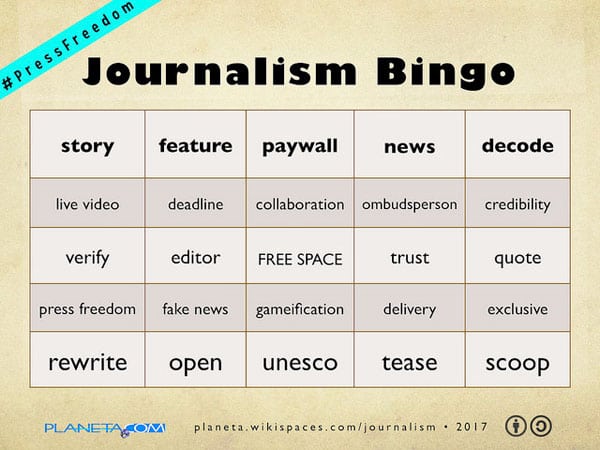
June 18, 2018; Inside Philanthropy
These days at NPQ, we write a lot about nonprofit journalism. In part, this is because the field is growing rapidly and there is a lot to report on. We also recognize that we are part of the field ourselves. But it is more than that. While it is easy to romanticize the press, as is done after a fashion in such films as The Post, Spotlight, and—who could forget?—All the President’s Men, the reality is that strong media form a critical part of a functioning democratic polity.
And, of course, that media is faltering, especially at the local level. As a new report, Funding the News, by Matthew Nisbet and his colleagues—co-published by Harvard’s Shorenstein Center on Media, Politics, and Public Policy and the School of Journalism at Northeastern University—makes clear, while nonprofit journalism is rising, commercial journalism is declining at a precipitous rate.
Just how precipitous? One statistic makes the decline crystal clear. As Nisbet and his colleagues write, “In 2000, at the start of the Internet era, total print advertising revenue for commercial newspapers was $67 billion. Fourteen years later, inflation-adjusted print and digital advertising revenue at newspapers had plummeted to $20 billion.” The employment decline is less dramatic (fortunately, advertising is not the only source of revenue), but still large. As recently as 2008, US newspapers employed more than 50,000; by 2016, that number had dipped below 34,000.
Seen in this light, the $1.8 billion of philanthropic funding for nonprofit journalism from 2010 through 2015—or $300 million a year on average—is rather paltry. For those doing the math, even if we were to assume that philanthropic funding of journalism was $0 in 2000—not true, of course—the $300 million in philanthropy covers less than one percent of the local media advertising revenue decline. As Mike Scutari observes in Inside Philanthropy, “philanthropy’s efforts to offset the decimation of the news industry amount to a finger-in-the-dike effort.”
Worse, Scutari notes, of the $1.8 billion spent by foundations from 2010 through 2015, “Only $80.1 million—or about five percent…went to support state and local news nonprofits, despite widespread alarm about the demise of media at this level.” Still, Scutari acknowledges that the report “reminds us that the nonprofit media sector is now quite extensive.”
Sign up for our free newsletters
Subscribe to NPQ's newsletters to have our top stories delivered directly to your inbox.
By signing up, you agree to our privacy policy and terms of use, and to receive messages from NPQ and our partners.
Overall, the $1.8 billion spent by foundations from 2010 through 2015 can be divided into the following categories:
| Journalism schools and museums | $369 million (21%) |
| Professional development | $122 million (7%) |
| Research, legal, and tech support | $79 million (4%) |
| Public media | $796 million (44%) |
| Magazines | $80.1 million (5%) |
| National news nonprofits | $216 million (12%) |
| Local and state media | $80.1 million (5%) |
| University-based journalism initiatives | $35.9 million (2%) |
The report goes on to identify winners and losers. Among local publications, Nisbet and his colleagues note staff and budget figures for larger local nonprofit media, such as the “San Francisco Bay Citizen (30 staff, $4 million), Texas Tribune (29 staff, $3.6 million), MinnPost (14 staff, $1.5M), and Voice of San Diego (14 staff, $1.1 million).” At the same time, Nisbet and his coauthors also note that 43 of 75 surveyed nonprofit “publishers employed five or fewer staff and 20 reported less than $250,000 in annual funding.”
Indeed, concentration of funding among a relatively small number of nonprofits is a consistent report theme: Nisbet and colleagues note that the top 25 state and local nonprofits received 66 percent of all philanthropic dollars. The percentage going to the top 25 nonprofits was even higher elsewhere—public media (72 percent), magazines (99 percent), national nonprofits (81 percent), university-affiliated news (92 percent). The state and local media numbers are, however, perhaps the most disturbing, given that one might hope that with 750 community foundations nationwide, strong nonprofit media operations would exist in many of these places.
Nesbit and colleagues suggest a couple mechanisms to broaden support. One involves employing matching funds to encourage local donations. A second is for foundations to earmark “a modest amount annually, perhaps in the ballpark of two percent, for a journalism fund that could support news work in their communities.”
As Scutari notes, philanthropy’s potential to broaden its impact in nonprofit journalism is great. “Foundations can’t stop every small town daily from going under. They can’t prevent vulture capitalists from bleeding regional outlets dry,” Scutari concedes. “But they can make a difference in defending the Fourth Estate, and many have risen to the challenge.”—Steve Dubb













